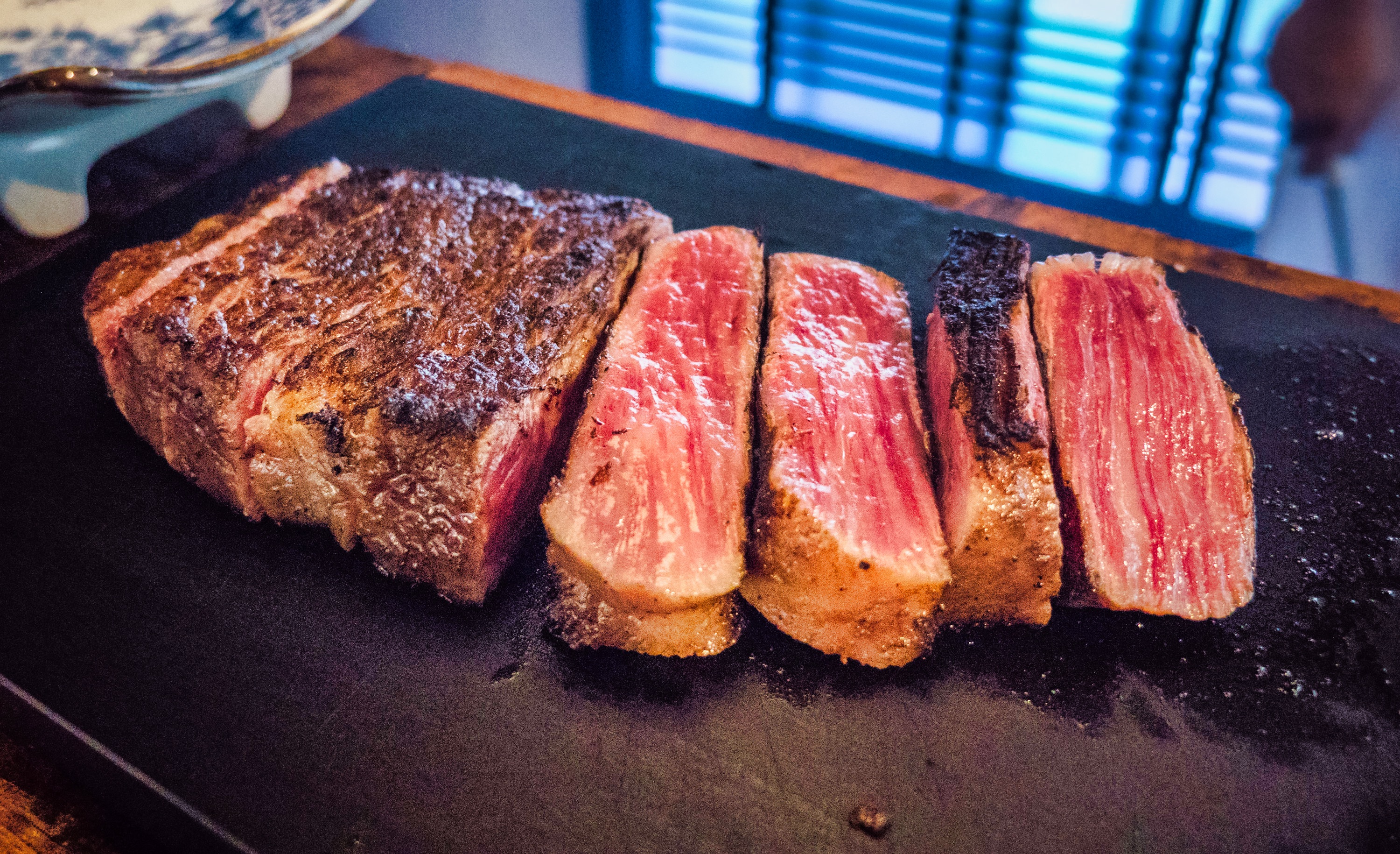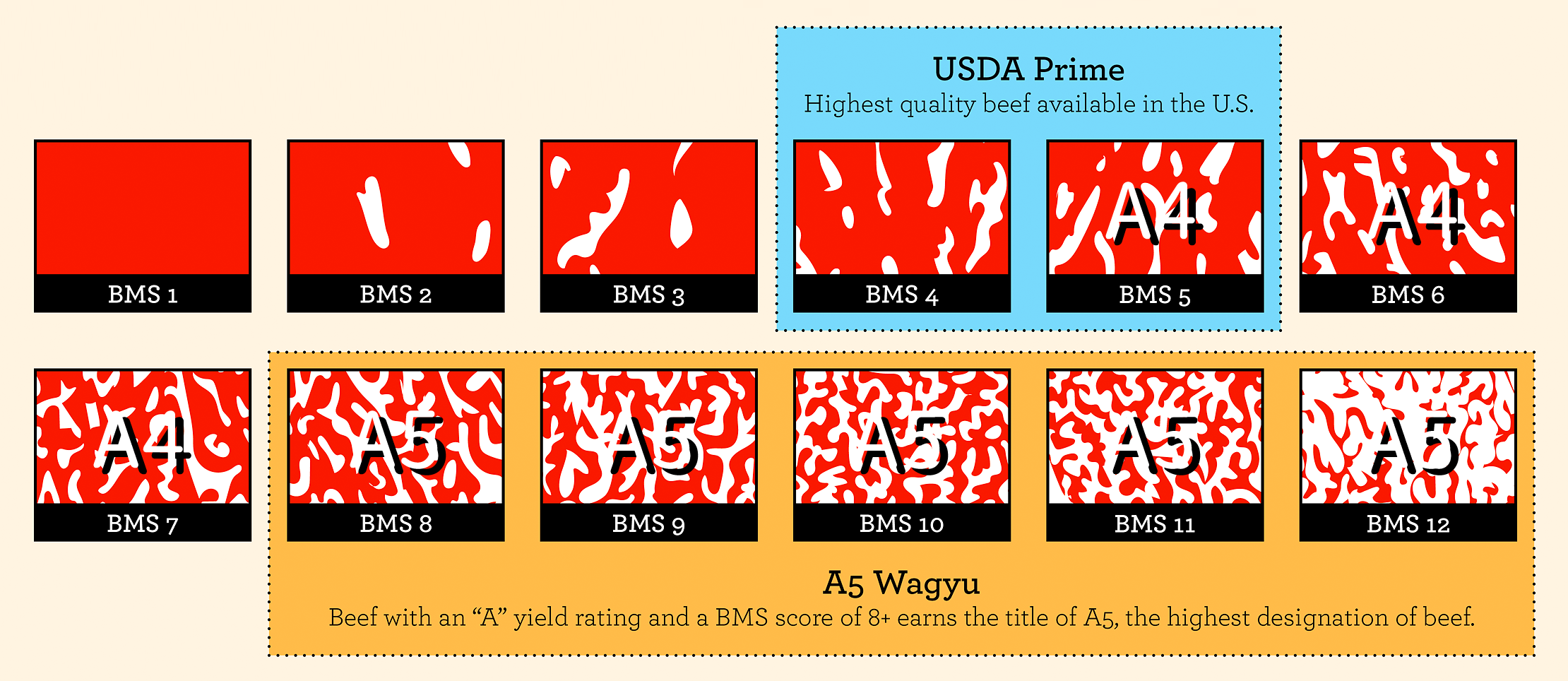In American culture we tend to have an obsession with extremes. We want our lattes to be venti-sized with a quad-shot of espresso. We want the digital camera with the highest megapixel count. We want the house with the most square feet. So when when it comes to Wagyu from Japan, we want the one with the most marbled fat content and the highest rating – A5.
But if you haven't already, you should try A4 rated Wagyu – the preferred grade of those who raise Japanese Wagyu.
As the second-highest rated Wagyu grade in Japan, A4 is not only extremely marbled, it is packed with the distinctive umami flavor and lower melting point fat compounds that contribute to the melts-in-your-mouth sensation for which Japanese Wagyu is famous. It's unmatched by any American crossbred Wagyu or Angus Prime steak. It comes from the Kuroge Washu breed of cattle and a rating system that scores beef based on the quality and overall level of its fat marbling. A4 is a mark of ultra-premium quality for beef in Japan. In fact, if the animal is the Kuroge Washu breed and raised in Hyogo prefecture by a member of the Kobe Beef association, then an A4 rating officially qualifies it as Kobe Beef. In other words, A4 is an outstanding, very luxurious beef.
In my travels to Japan to bring back the very best Wagyu from Japan's top producers, I have yet to encounter a Wagyu chef or farmer who says that A5 is the beef grade they prefer. It's A4 they'll order at restaurants or cook at home. In fact, the extreme end of things, the BMS level 12 (the highest marbling score) of A5 is thought of as a work-of-art and served in part for entertainment value. "Wow, look at that," beef connoisseurs say as they snap photos of A5 beef for Instagram while savoring the A4 Wagyu they ordered to enjoy.
If I have people over for dinner, invariably, someone will ask me to cook up some "A5 BMS 12" Wagyu from Japan. I'm not one to judge a request like this. Everyone wants to try the extreme version – and it's helpful to calibrate Japanese Wagyu versus other kinds of beef by starting with extremes.
Why is A4 so great?
A4 Wagyu has slightly less fat and is not as overwhelmingly rich as A5 Wagyu. It still has the unique melts-in-your-mouth and the umami qualities which are unique to the Kuroge Washu breed, but carries a more beefy flavor profile and you can eat more of it in one sitting. Simply put, for most people, it's simply more enjoyable. Don't get me wrong, A5 is incredible. I like to say that A5 Wagyu is more of an experience than a meal. Whereas A4 Wagyu is both a meal and an experience.
Check out this video I filmed in Japan with michelin star chef Mike Bagale (former Executive Chef of Alinea) talking about the flavor profiles of different grades and cuts of Japanese Wagyu to get a sense for what I'm talking about.
If you're the type of person that likes to have a steak that fills your plate, where meat is the centerpiece of the meal in volume terms, then A5 Wagyu isn't going to fit the bill (literally or in pocketbook terms). A5 is simply too rich for most people to be able to eat a lot of it. A slice or two of A5 Wagyu, seasoned simply and seared on high heat is an unforgettable culinary experience that I highly recommend, but if you're looking for the ultimate beef lover's meal to come back to again and again, I recommend that you try some A4 Wagyu from Japan.

